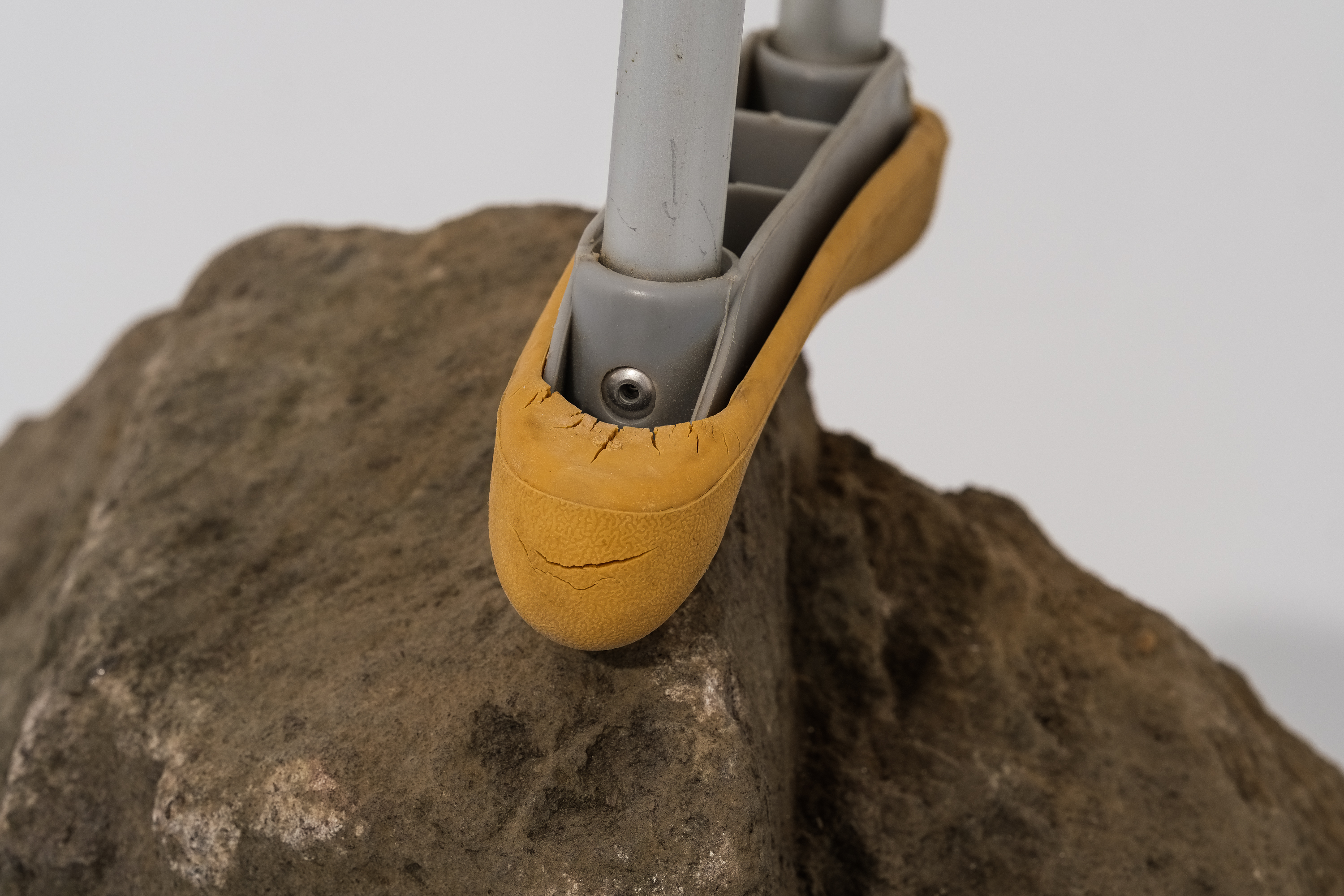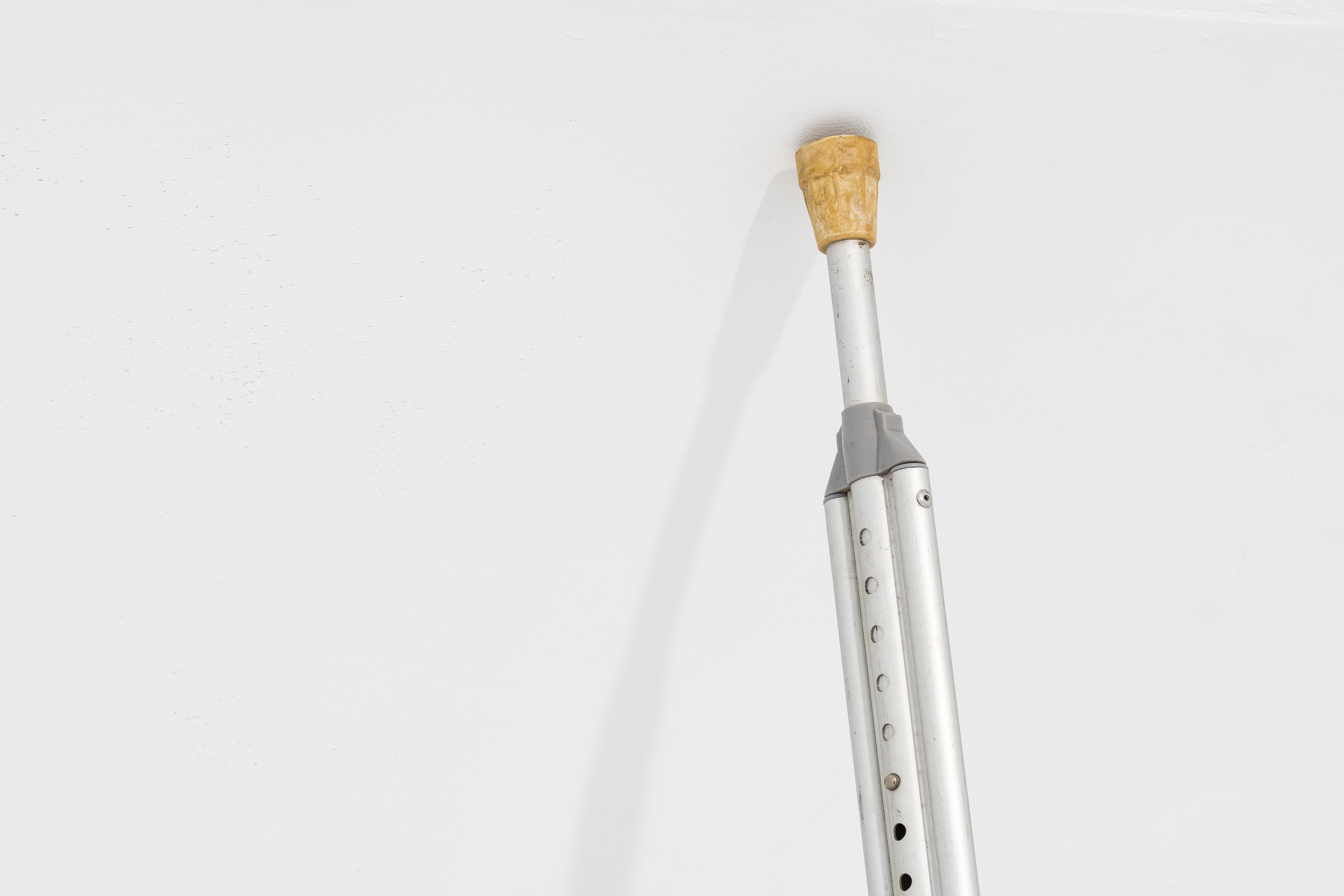







The fulcrum of the inverted assembly|倒裝的支點
stone, motor, sandpaper, stainless steel, hardware parts, crutch.
Dimensions variable, TNUA - Underground experimental field, Photo by JHU Ci-Hong, Taiwan, 2020.
石頭、馬達、砂紙、不鏽鋼、五金零件、拐杖,場地依尺寸(地下美術館),朱淇宏攝影,臺灣,2020。
In this work, I attempt to extract the more subtle emotional elements from the objects through the method of "assembling" and attach them to the space. With the operation of the kinetic structure, it continuously disturbs the viewer's bodily perception and experience during observation. Between the stone and the sandpaper, in the seemingly useless and futile abrasive movement, the mass of the stone itself is gradually disappearing at an extremely slow rate over time. The fragments of this disappearing mass and its traces will partly scatter in the air, while another part is imprinted on the sandpaper.
In a space characterized by narrow terrain, inclined walls, and the pressure of the ceiling, the cane not only brings forth the image and function of support but also serves as a bridge for spatial extension. It forms an inseparable state among the points of contact between the stone, sandpaper, cane, and wall. It resembles a continuously operating "space machine" that loosens the viewer's perception and understanding of the sculpture throughout the process of being observed.
在這件作品中,我透過「拼裝」作為方法,試圖將物件中較為幽微的感性成分提取出來,並將它依附在空間之中,隨著動力結構的運轉,持續著擾動觀者在觀看時的身體感知與經驗。石頭與砂紙之間,在看似無用且徒勞的磨損運動裡,石頭本身的質量在時間的推移之中,正以極慢的速率不斷的消逝,而這些消失的質量與軌跡,一部分會化為碎屑飄散在空中,另一部分則印證在砂紙之上。在一個具有狹窄的地形、傾斜的牆面、天花板下壓的空間調性裡,拐杖所帶出的不僅僅是支撐的意象與功能,它同時也做為空間延伸的橋樑,在石頭、砂紙、拐杖、牆面的相互接觸點之間構成了一種不可分割的狀態,像是一個不停運轉的「空間機器」,在被觀看的過程中,持續的鬆動觀者對於雕塑本身的感知與理解。